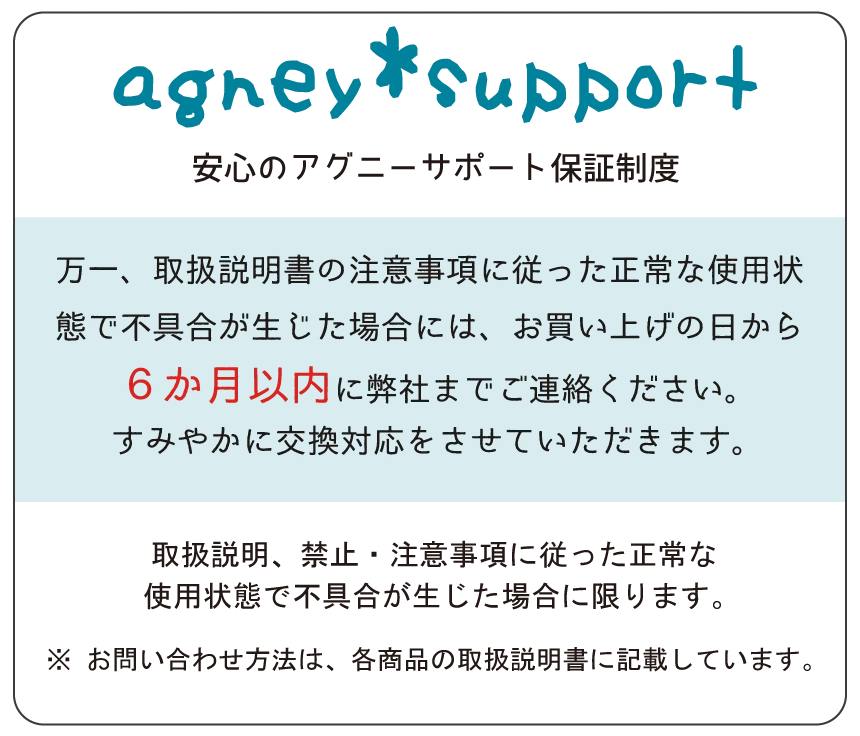We want our babies to enjoy eating, but it's a bit scary to feed them something when they're still so young... Families who are just about to start weaning their babies may have these concerns. What should we be careful of when feeding weaning food to babies whose digestive organs are still immature? In this article, we will explain the key points and precautions to take when introducing weaning food to babies at each stage: early, middle, late, and complete.
■How to safely introduce solid food to your baby? Important points and precautions
To feed your baby solid food as safely as possible and avoid putting strain on your baby's body, it is a good idea to pay attention to the following points.
- Try small amounts of any food.
Start with one small spoonful.
・Be sure to heat it.
It is also recommended to boil or steam fruits. These have a sterilizing effect and are less likely to cause allergies. Raw fish such as sashimi should be avoided during the weaning stage.
・Start without any seasoning.
Salt and sugar put a strain on the baby's internal organs, so you should wait until the later stages of weaning before using sugar, salt, or soy sauce in baby food. In the early stages, feed your baby unseasoned food, and gradually introduce seasonings.
- Cook without oil at first
Later in the pregnancy, you can start using unsalted butter and olive oil, again starting with very small amounts.
- Know the foods you should not give to your baby
The following items should not be used in baby food:
・Honey, brown sugar, and brown sugar (may contain botulism bacteria, which do not die even when heated)
・Blue fish (high risk of allergies and food poisoning)
・Rice cakes, chewy jellies, nuts (they may be difficult to chew and get stuck in your throat)
■ Early weaning food (5 to 6 months)
・Number of times: Aim for once a day.
・Baby food contents: "Mash" is the basic rule. No seasoning is required.
・Menu examples: whole porridge, warm mashed vegetables, and once you get used to it, mashed tofu, heated and mashed white fish, etc.
・Amount: about one spoon
Weaning food at this stage is not about providing nutrients, but rather about getting your baby used to things other than breast milk or formula. Therefore, you don't need to give a lot of food yet, and if your baby doesn't like it, there's no need to force him or her. Try not to restrict breast milk or formula.
■Middle stage baby food (7 to 8 months)
・Number of times: Aim for twice a day.
・Baby food contents: Food that is "hard enough for a baby to crush with their tongue and eat." Food that does not require seasoning is recommended, but it is okay to use small amounts occasionally.
・Menu examples: 5-7 times rice porridge, soft boiled and finely chopped vegetables, cooked tofu cut into small pieces, finely shredded boiled or steamed fish, etc. Small amounts of unsalted butter or olive oil can also be used.
・Amount: About 50-80g of porridge, about 20-30g of vegetables or fruit, and several types of side dishes, each of which is a bite each.
■ Late weaning food (9 to 11 months)
・Number of times: Aim for about three times a day.
・Baby food contents: Food that is "hard enough for babies to crush with their gums and eat." It would also be good to have a style that allows babies to enjoy the "fun of eating by holding it in their hands."
・Examples of menu items: 5x rice porridge, well-boiled and cut udon noodles into 1-2cm pieces, softly boiled vegetables in stick form (to be eaten by hand), softly boiled and cut boiled or steamed fish, minced meat can also be used. Small amounts of miso paste or mayonnaise can also be used.
・Amount: About 80-90g of porridge, about 30-40g of vegetables or fruit, and several types of side dishes, 3-4 bites each.
It is okay to give your baby about 80g of dairy products such as yogurt.
■ Complete weaning stage (1 to 1.5 years old)
・Frequency: Three times a day. It is okay to give them snacks.
・Baby food contents: It's fine to think of it as "the same menu as adults, but with a light flavor and softness." Snacks include milk or follow-up milk, lightly sweetened baby biscuits or rice crackers, and fruits such as bananas.
・Menu examples: Softly cooked rice and soft bread can be used as is. A wide range of softly cooked vegetables can be used. Fish and meat are also acceptable, but salt and fat content should be kept low. Even adult side dishes can be used by removing salt and oil with hot water.
・Amount: 80-90g of rice, 40-50g of vegetables and fruits, 5-6 bites of each of several different side dishes. You can also give about 100g of dairy products such as yogurt.

You may be worried that baby food has more rules than adult food, but just remember that "porridge is the basis, and gradually increase the number of foods your baby can eat," and give it a try. Just be careful when feeding your baby new foods, and try to only give small amounts. Avoid feeding your baby anything that makes you even the slightest bit unsure or unsure, and feed them foods that have been okay up until now. As babies grow, the number of foods that are okay for them to eat increases day by day, so keep a close eye on your baby every day.
At first, your child may have a lot of likes and dislikes. There may be a period when you notice differences in eating habits, such as "yesterday he ate, but today he won't eat at all," but this is normal, so try not to worry too much and try to work on it slowly.






